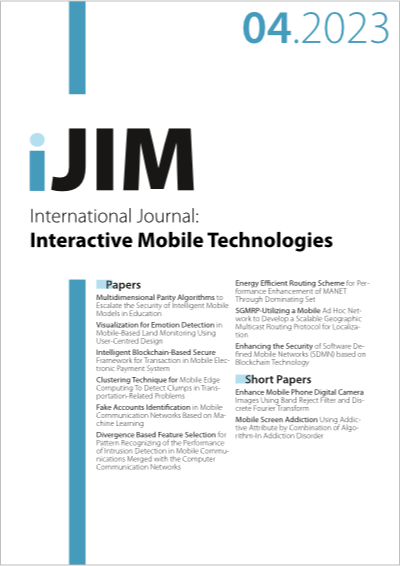Enhance Mobile Phone Digital Camera Images Using Band Reject Filter and Discrete Fourier Transform
DOI:
https://doi.org/10.3991/ijim.v17i04.37669Keywords:
Band Reject Filter (BRF) ; Periodic Noise; Image Enhancement; DFT; Mobile Phone images.Abstract
These days, We know that mobile phones with camera are very common to used by most of the people because of their ease of use and carry . So I figured I need for mobile phone images processing. These images are often subjected to a variety of types of distortion, such as noise, poor illumination, and blur due to transmission , image acquisition and mobile movement during capturing scene. This Degradation leads to produce distorted images are not suitable for viewing or application. To overcome this degradation, this paper presents image improvement in mobile phone by distortion removal using Band Reject Filter and DFT to obtain on the best clear image. Periodic noise is sinusoidal of several of certain frequencies and periodic in nature. It looks identical to the bars that the image is covered. The proposed method is subjected to eliminate this noise from a set of images using Band Reject Filter using discrete Fourier transform that attenuate and replace a number of degradation bands. Then, computes the peak signal to noise ratio metric for each band. After that, select the largest value of each band for the purpose the making one clear image. Finally, the bands that carry value large are merged to produce a one image. The final image is converted to the spatial domain using an inverse Fourier transform. The experimental outcomes indicate that the proposed method improves the degraded image by a greater percentage without using the better value for metric and makes image more clear and informative compare with the input image.
Downloads
Published
How to Cite
Issue
Section
License
Copyright (c) 2023 Rusul H. Al_taie, Hawraa abd Al_kadum hassan

This work is licensed under a Creative Commons Attribution 4.0 International License.


